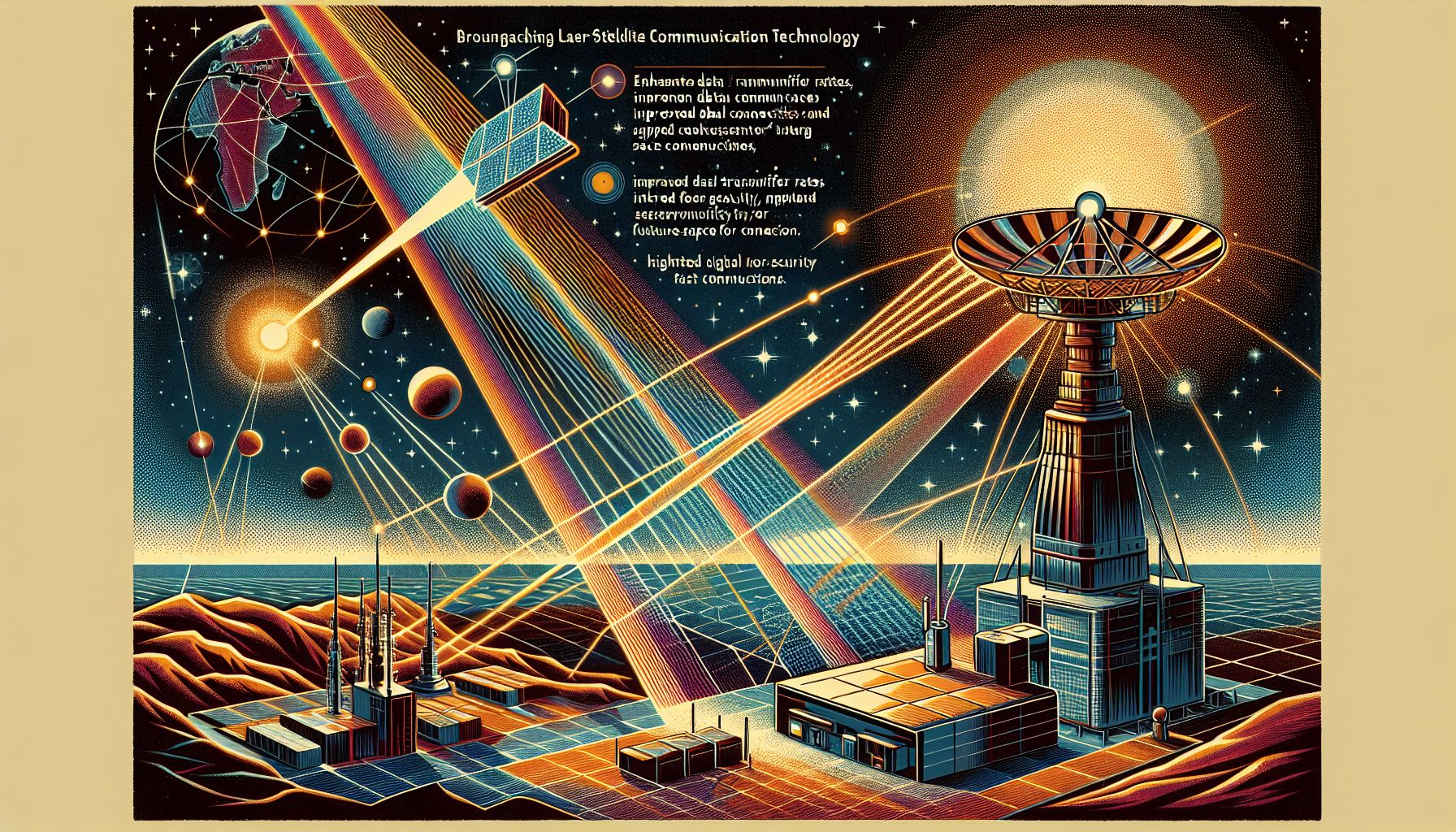Laser Satellite Communication: TNO's Breakthrough in Global Connectivity

Delft, Monday, 15 July 2024.
TNO unveils groundbreaking laser-satellite communication technology, promising enhanced data transfer rates and improved global connectivity. This advanced system uses light waves instead of radio waves, offering higher capacity, faster connections, and increased security for future space-based communications.
The Technology Behind Laser Satellite Communication
TNO’s laser-satellite communication leverages light waves to transmit data, a significant departure from the traditional use of radio waves. This shift allows for much higher data transfer rates and greater security. Optical communication reduces the risk of interference and eavesdropping, making it a more secure option for critical data transmissions. The technology uses compact optical terminals developed by Latica Pletikapić Exle and her team at TNO, designed to be integrated into small satellites for high-capacity, fast connections[1].
Collaborative Efforts and Industrialization
TNO is partnering with Dutch companies, including FSO Instruments, to bring this technology to market. Will Crowcombe, Managing Director of FSO Instruments, highlights that optical communication enables fast and secure connections between ground stations, satellites, aircraft, and unmanned aerial vehicles. FSO Instruments integrates TNO’s technology into its products and collaborates on research and development to innovate further. This partnership enhances the Netherlands’ capacity to become a leading international supplier of optical modules and subsystems for laser-satellite communication[2].
Global Implications and Future Prospects
The adoption of laser-satellite communication has significant global implications. For instance, the first optical ground station (OGS) in Western Australia and another in Santiago, Chile, are being established to create a global network capable of handling optical data services[3]. This network will facilitate secure and efficient data transfers, crucial for advancing various applications, from Earth observation to secure military communications. Hanna Sundberg, Project Manager for the NODES project, emphasizes the transformative potential of this technology in space communications[4].
A Vision for the Future
TNO aims to mature the laser-satellite communication market within the next 6 to 10 years, connecting research with commerce to ensure that the Netherlands remains at the forefront of this technology. The organization has been active in space technology for 60 years, using its extensive expertise in astronomy and Earth observation to drive these advancements. The comprehensive system includes constellations of orbiting satellites and a network of optical ground stations, providing a robust infrastructure for future communications[5].
Conclusion: A Leap Forward in Connectivity
TNO’s laser-satellite communication technology represents a significant leap forward in global connectivity. By utilizing light waves, this technology offers a secure, high-capacity, and fast alternative to traditional radio wave communication. The collaboration with FSO Instruments and other partners positions the Netherlands as a key player in this emerging market, promising substantial societal and economic impacts. As global data demands continue to rise, innovations like these are crucial for staying ahead in the rapidly evolving field of space communications.

